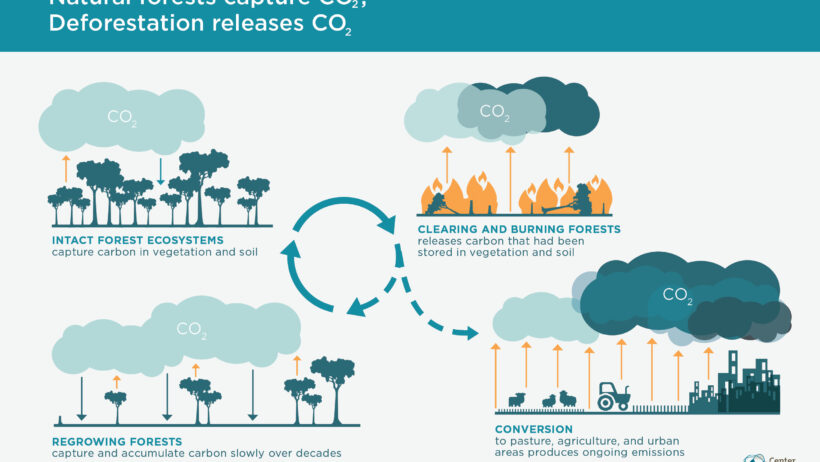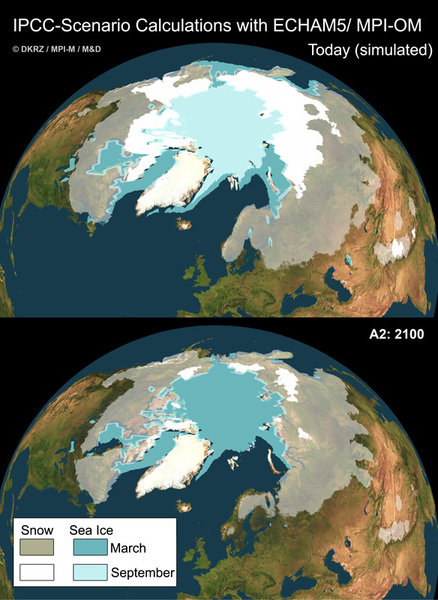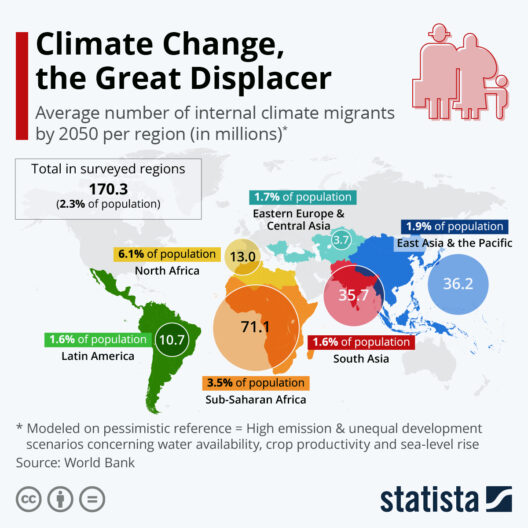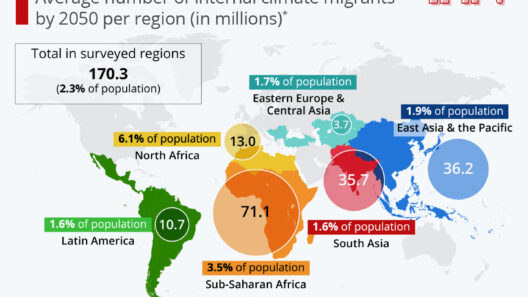Climate change and deforestation represent two of the most pressing crises facing the planet today, intricately intertwined in a vicious cycle exacerbating each other’s impact. Understanding how these two phenomena influence and perpetuate one another is vital for developing effective conservation strategies and climate action plans. This article delves into the dynamic relationship between climate change and deforestation, exploring the underlying mechanisms that link them, the consequences of their interplay, and potential solutions that can mitigate their synergistic effects.
The relationship between climate change and deforestation is multifaceted. Deforestation, the large-scale removal of trees from forested areas, leads to a significant increase in the concentration of greenhouse gases in the atmosphere. Trees play an essential role in sequestering carbon dioxide (CO2), absorbing it during photosynthesis and storing it in their biomass. When forests are destroyed, not only is this carbon storage capacity diminished, but the carbon stored in tree biomass is released back into the atmosphere, further exacerbating the greenhouse effect and contributing to global warming.
As global temperatures rise due to increased greenhouse gas emissions, climatic conditions become increasingly inhospitable for tree growth and forest sustainability. Changes in rainfall patterns, rising temperatures, and increased frequency of extreme weather events, such as droughts and storms, disproportionately affect forest ecosystems. These changes can lead to tree mortality, reduced growth rates, and greater susceptibility to pests and diseases. Consequently, as climate change accelerates, it contributes to the degradation of forests, creating a feedback loop that intensifies both climate change and deforestation.
One significant consequence of this interplay is the encroachment of agriculture into previously forested areas. As temperatures rise, the agricultural sector faces mounting pressures to adapt through expansion into forested land. The conversion of forests to arable land not only results in habitat loss and biodiversity decline but also increases greenhouse gas emissions from both land-use change and agricultural practices, such as livestock production, which is particularly carbon-intensive.
Another critical aspect to consider is the role of forest fires, which are becoming increasingly frequent and intense due to climate change. Rising temperatures and prolonged drought conditions create ideal scenarios for wildfires, which can ravage large swathes of forested areas. These fires not only release copious amounts of CO2 but also render lands unsuitable for reforestation and rehabilitation. In this manner, forest fires become a catalyst for both deforestation and climate change, creating an alarming cycle that is difficult to break.
Moreover, the socioeconomic factors that drive deforestation can be exacerbated by climate change. As communities face the dual threats of dwindling forests and shifting climate conditions, they may resort to exploiting forest resources as a means of survival. Unsustainable practices, such as illegal logging, over-extraction of non-timber forest products, and land encroachment, can accelerate deforestation rates, further depleting forest cover essential for ecosystem services and climate regulation.
Despite these grave challenges, solutions are emerging that address the intertwined issues of climate change and deforestation. Sustainable land management practices, including agroforestry and reforestation initiatives, have the potential to create synergies between agricultural productivity and forest conservation. By integrating trees into agricultural landscapes, farmers can enhance carbon sequestration, improve soil fertility, and promote biodiversity while maintaining or increasing crop yields.
Policy measures also play a critical role in mitigating the effects of climate change and deforestation. Establishing legally protected areas, promoting sustainable forestry practices, and developing carbon markets can incentivize the preservation of forest ecosystems. These initiatives can align economic interests with environmental stewardship, providing economic alternatives to communities that rely on short-term gains from deforestation.
International cooperation is essential in addressing the global nature of these crises. Initiatives like the United Nations’ REDD+ program aim to reduce emissions from deforestation and forest degradation, providing financial incentives to developing countries to maintain and restore their forest ecosystems. Such global frameworks are crucial, as forests play a significant role in regulating the Earth’s climate, and their preservation is vital for achieving global climate targets.
The intersection of climate change and deforestation poses significant challenges but also provides opportunities for innovative solutions that can yield multifaceted benefits. It is imperative that we recognize the symbiotic relationship between these two phenomena and adopt integrated approaches that address the root causes of both. By promoting sustainable land-use practices, strengthening policies, and fostering international collaboration, it is possible to create resilient ecosystems that can adapt to the challenges posed by both climate change and deforestation.
Ultimately, recognizing the interconnectedness of climate change and deforestation empowers us to harness the power of forest ecosystems as both a buffer against climate change and a source of biodiversity. This comprehensive perspective not only enhances our understanding of these global challenges but also informs effective strategies for their resolution, fostering a sustainable future for generations to come.





